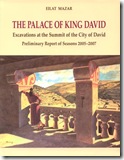The tablets may be “part of a possible archive.” From a press release from the University of Toronto:
Excavations led by a University of Toronto archaeologist at the site of a recently discovered temple in southeastern Turkey have uncovered a cache of cuneiform tablets dating back to the Iron Age period between 1200 and 600 BCE. Found in the temple’s cella, or ‘holy of holies’, the tablets are part of a possible archive. The cella also contained gold, bronze and iron implements, libation vessels and ornately decorated ritual objects.
“The assemblage appears to represent a Neo-Assyrian renovation of an older Neo-Hittite temple complex, providing a rare glimpse into the religious dimension of Assyrian imperial ideology,” said Timothy Harrison, professor of near eastern archeology in the Department of Near and Middle Eastern Civilizations and director of U of T’s Tayinat Archaeological Project (TAP). “The tablets, and the information they contain, may possibly highlight the imperial ambitions of one of the great powers of the ancient world, and its lasting influence on the political culture of the Middle East.”
Partially uncovered in 2008 at Tell Tayinat, capital of the Neo-Hittite Kingdom of Palastin, the structure of the building where the tablets were found preserves the classic plan of a Neo-Hittite temple. It formed part of a sacred precinct that once included monumental stelae carved in Luwian (an extinct Anatolian language once spoken in Turkey) hieroglyphic script, but which were found by the expedition smashed into tiny shard-like fragments.
The press release continues here.
HT: Joe Lauer
